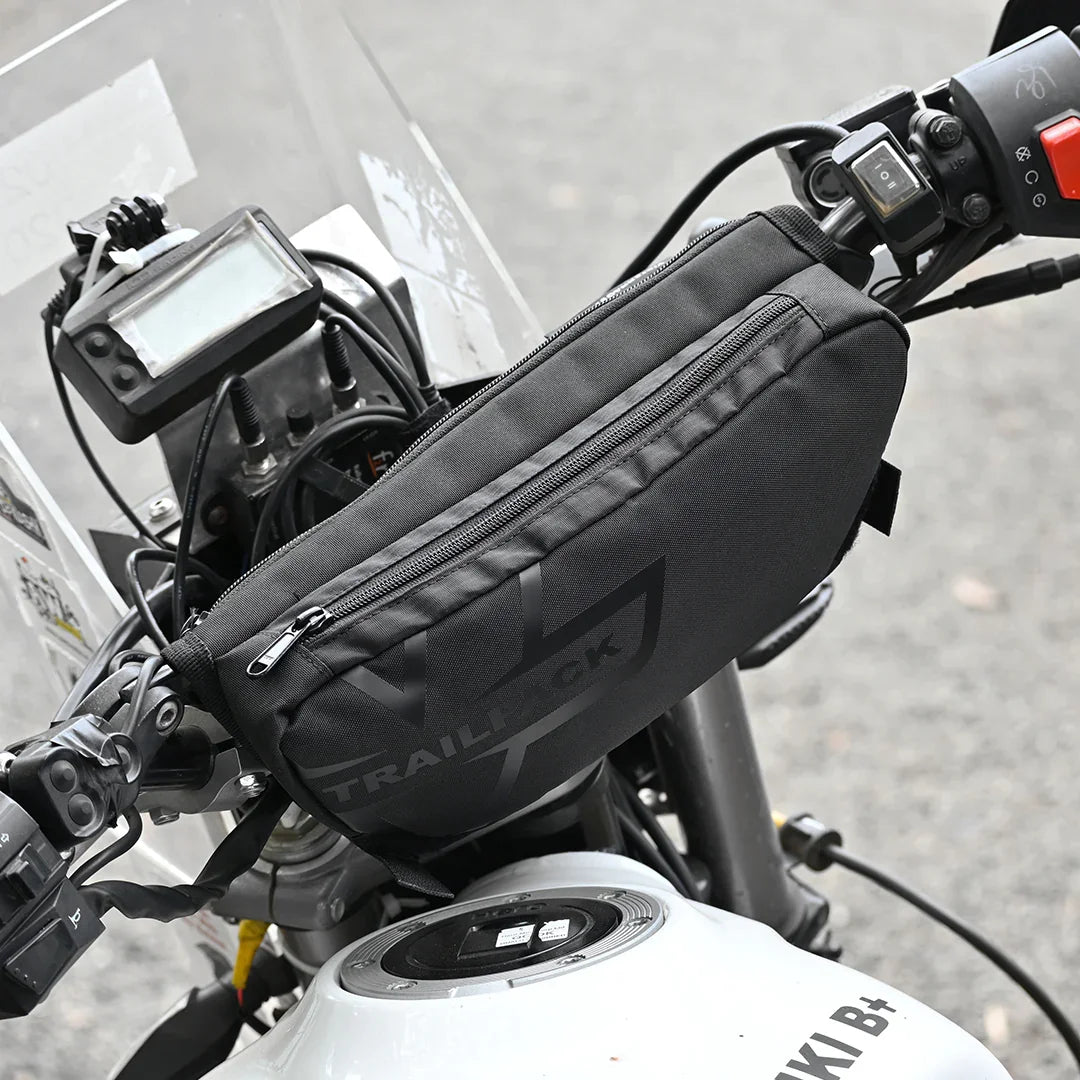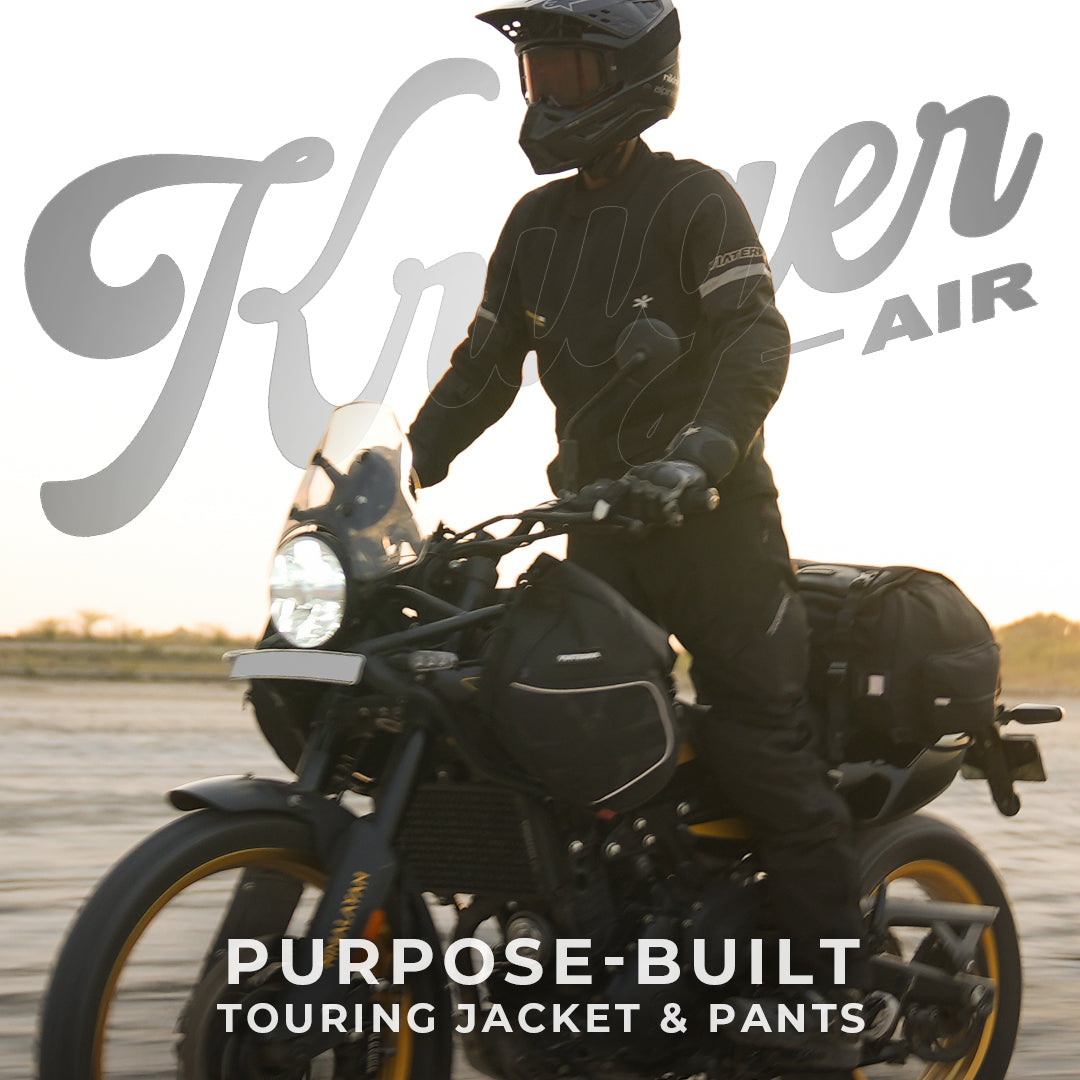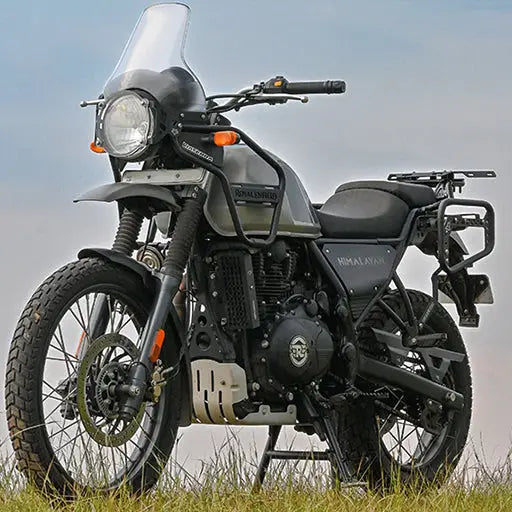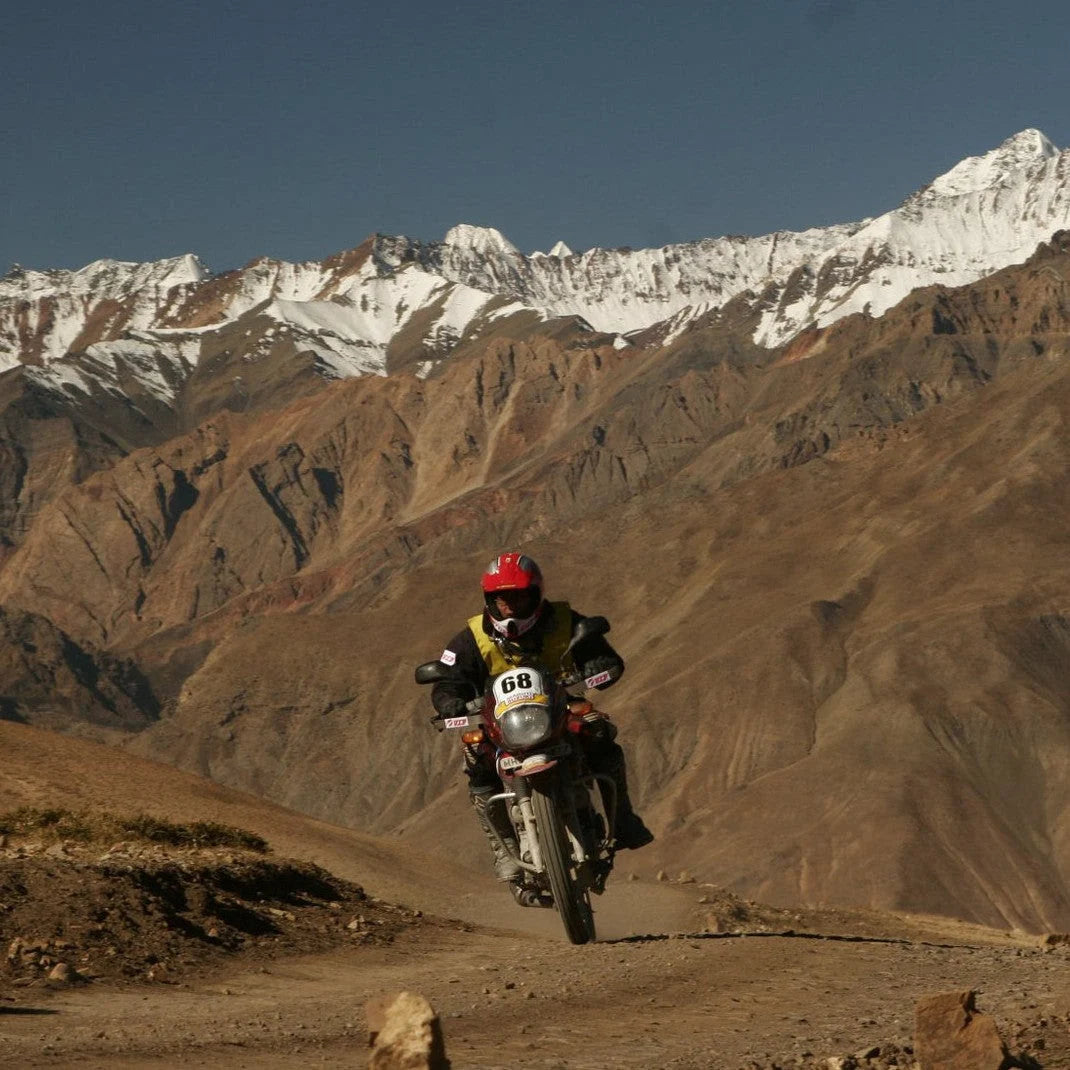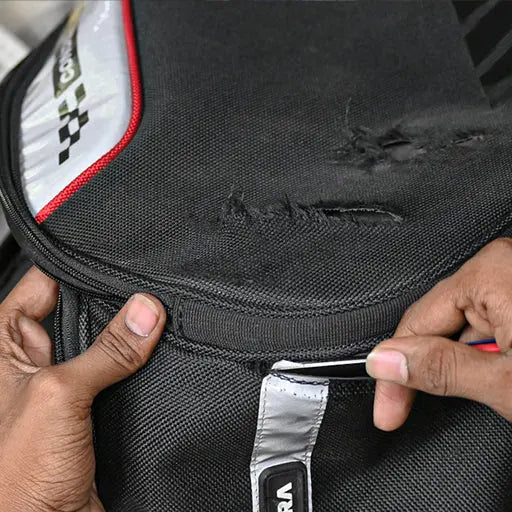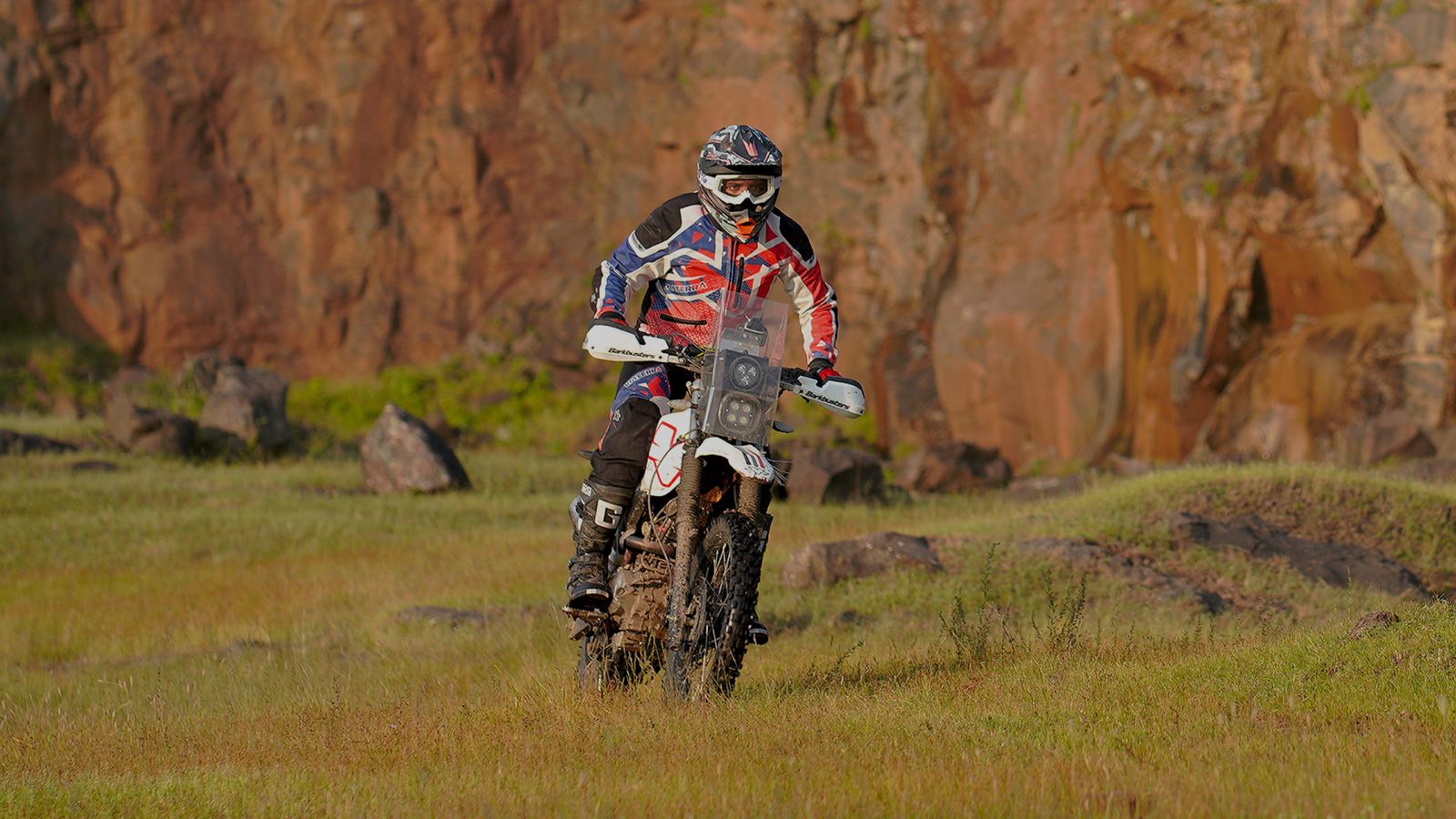When we talk about protective motorcycle gear, jackets and helmets usually take the spotlight. But ask any seasoned rider, and they’ll tell you, riding pants are just as critical. They protect your lower body in a fall, keep you comfortable on long rides, and are designed to work with different riding styles.
In this blog of Gear Matters, we take a closer look at three types of riding pants - street mesh, off-road, and urban commuter pants. Each of these is built with a specific purpose in mind, and knowing the difference will help you choose the right pair for your style of riding.
Why Riding Pants Matter
Many riders make the mistake of pairing a high-quality helmet and jacket with regular jeans or track pants. The problem? In an impact or slide, your legs are extremely vulnerable. Riding pants aren’t just about adding armor, they combine abrasion resistance, ventilation, comfort, and fit in a way that regular clothing simply cannot.
Choosing the wrong type of pants can mean sweaty, uncomfortable rides, misplaced armor, or in the worst case, inadequate protection. The right choice, on the other hand, keeps you safe while making long hours in the saddle far more comfortable.
Street Mesh Riding Pants: Made for the Tarmac
Street mesh riding pants are the most commonly used category, designed for city rides, highway cruising, and weekend getaways. Comfort in hot Indian conditions is a top priority, which is why ventilation plays such a big role.
Take the ViaTerra Spencer pants for example. They feature large, strategically placed mesh panels that allow continuous airflow, keeping you cool in the saddle. But airflow is only half the story. A genuinely well-designed street pant doesn’t compromise on safety.
That’s why the Spencer uses large Invista Cordura panels at key abrasion zones, paired with CE Level 2 Type B Sas-Tec armor at the knees and hips. Unlike smaller Type A armor, Type B offers wider coverage, making it more effective in a crash.
Street pants are also designed for comfort in riding position. They come with a pre-curved shape that ensures the armor sits correctly when you’re seated on the motorcycle. Add in adjustable zippers and cuffs for compatibility with different riding boots, and you get pants that are versatile, protective, and ideal for daily or long-distance street riding.
Key traits of street mesh riding pants:
-
High ventilation with large mesh panels
-
Invista Cordura for abrasion protection
-
CE Level 2 Type B armor at knees and hips
-
Pre-curved design for comfort in riding position
-
Wider leg openings with adjustable zippers
Off-Road Riding Pants: Built for the Trail
On the other end of the spectrum are off-road riding pants, which serve a completely different purpose. Off-road riding is highly active and dynamic; you’re constantly standing on pegs, shifting weight, and maneuvering through uneven terrain.
Because of this, off-road pants aren’t designed to carry built-in knee armor. Instead, they are meant to be worn over purpose-made knee protectors or braces, which offer far better impact protection for trail riding.
The ViaTerra Corbett pants are a perfect example. They act as a lightweight outer shell, providing abrasion resistance while allowing you to use your choice of knee protection underneath. The pants are constructed using high-strength 3D mesh, which flows far more air than regular mesh panels, keeping you cool even during tough off-road sessions.
One of the most noticeable differences is their shorter, tapered cut. Unlike street pants, Corbett pants are designed to fit easily inside tall MX or off-road boots. This avoids unnecessary fabric bunching up inside the boot, which could cause discomfort during active riding.
Key traits of off-road riding pants:
-
Outer shell to be worn over knee guards or braces
-
Extremely lightweight and high airflow with 3D mesh
-
Abrasion resistance without bulk
-
Shorter, tapered design for MX/off-road boots
Urban Commuter Riding Pants: Everyday Protection
The third type of riding pants is often the most overlooked - the commuter category. Many riders assume that for daily rides in traffic or short-distance commutes, protective pants aren’t necessary. But statistically, most accidents happen close to home and at relatively lower speeds. That makes everyday protection more important than most think.
This is where riding denims like the ViaTerra Austin come in. At first glance, they look just like your regular jeans, complete with a classic five-pocket design. But don’t let the casual look fool you. These denims use a combination of canvas and high-strength mesh, with discreet pockets for CE Level 2 Type B Sas-Tec armor at the knees and hips.
The biggest advantage is comfort and convenience. The armor is low-profile and lightweight, so you can wear these pants all day without discomfort - riding, walking, or even sitting in a café. They also blend seamlessly with everyday outfits, making them a great option for those who don’t want to change after every ride.
Key traits of urban commuter riding pants:
-
Look and feel like regular jeans
-
Built-in armor pockets for CE Level 2 protection
-
Comfortable enough for all-day use
-
Familiar five-pocket layout
Common Mistakes Riders Make
-
Wearing regular jeans instead of riding pants: Everyday denim offers almost no abrasion protection in a crash.
-
Using one pant for all conditions: A single pair often won’t perform equally well across street, off-road, and commuting needs.
-
Ignoring ventilation: Especially in India, airflow is crucial to avoid fatigue and dehydration.
-
Overlooking armor certification: Always ensure armor is genuine CE Level 2 from a trusted brand.
Choosing the Right Pants: Principles to Keep in Mind
-
Match pants to your riding style: Street for highways and city rides, off-road shells for trails, and denims for daily commutes.
-
Comfort matters: Pre-curved designs, ventilation, and boot compatibility all impact how long you can ride without fatigue.
-
Never compromise on protection: Look for pants with genuine abrasion-resistant fabric and certified armor.
-
Fit equals safety: Armor should sit correctly in the riding position without shifting.
In Conclusion: The Right Gear Makes the Right Ride
Riding pants are more than just a style choice, they’re a crucial part of your safety gear. If it’s the Spencer pants for street rides, the Corbett pants for off-road trails, or the Austin denims for daily commutes, choosing the right pants makes every ride safer and more enjoyable.
As we always say: right gear, right ride.
If you found this guide useful, share it with a fellow rider and stay tuned for more insights on riding essentials.
FAQs
1. What’s the main difference between a street mesh jacket and a touring jacket?
A street mesh jacket is shorter, snugger, and focused on ventilation and agility for city and weekend rides. Touring jackets are longer, with more coverage, storage pockets, and comfort-focused features for long-distance rides.
2. Why is ventilation so important in Indian riding conditions?
High airflow is essential to keep the rider cool and comfortable, especially in hot and humid climates. Jackets like the Spencer, Miller, and Kruger Air use large 3D mesh panels for maximum breathability.
3. Can an off-road jacket like the Corbett be used on the street?
Not by itself. Off-road jackets are outer shells designed to be worn over body armour or armoured base layers. They offer abrasion protection and superior airflow but need proper armour underneath.
4. Are commuter jackets like the ViaTerra Wayne safe enough for daily use?
Yes. The Wayne looks like everyday apparel but has dedicated armour pockets at the shoulders, elbows, and back. When paired with CE-certified armour, it provides the same protection while blending seamlessly with casual wear.
5. Do I really need different jackets for different types of riding?
Not necessarily, but using the right jacket for the right purpose makes a big difference. For example, a street mesh jacket might work for weekend rides, but for touring or off-road, a more specialized option will give better comfort, protection, and practicality.


